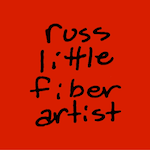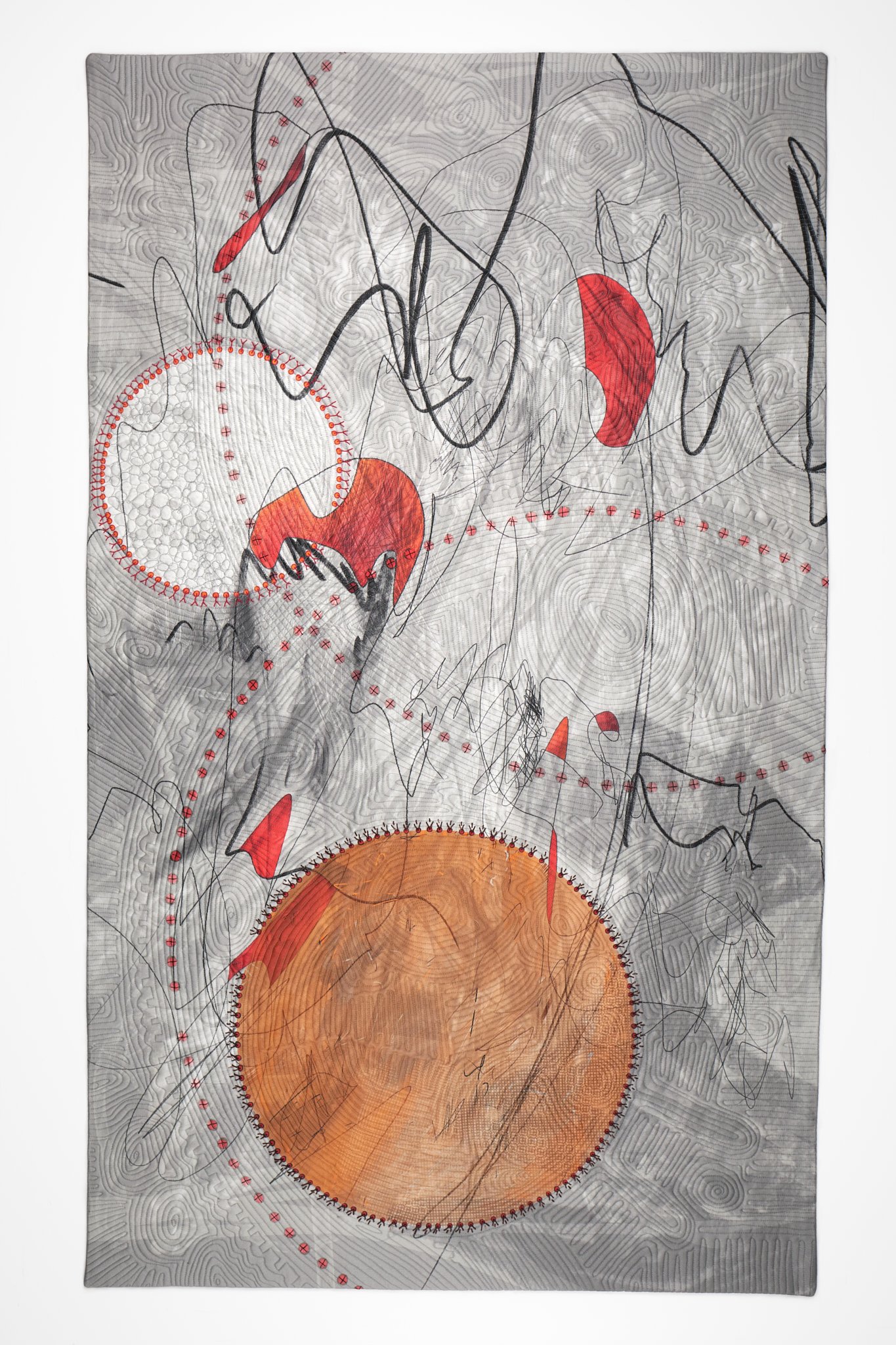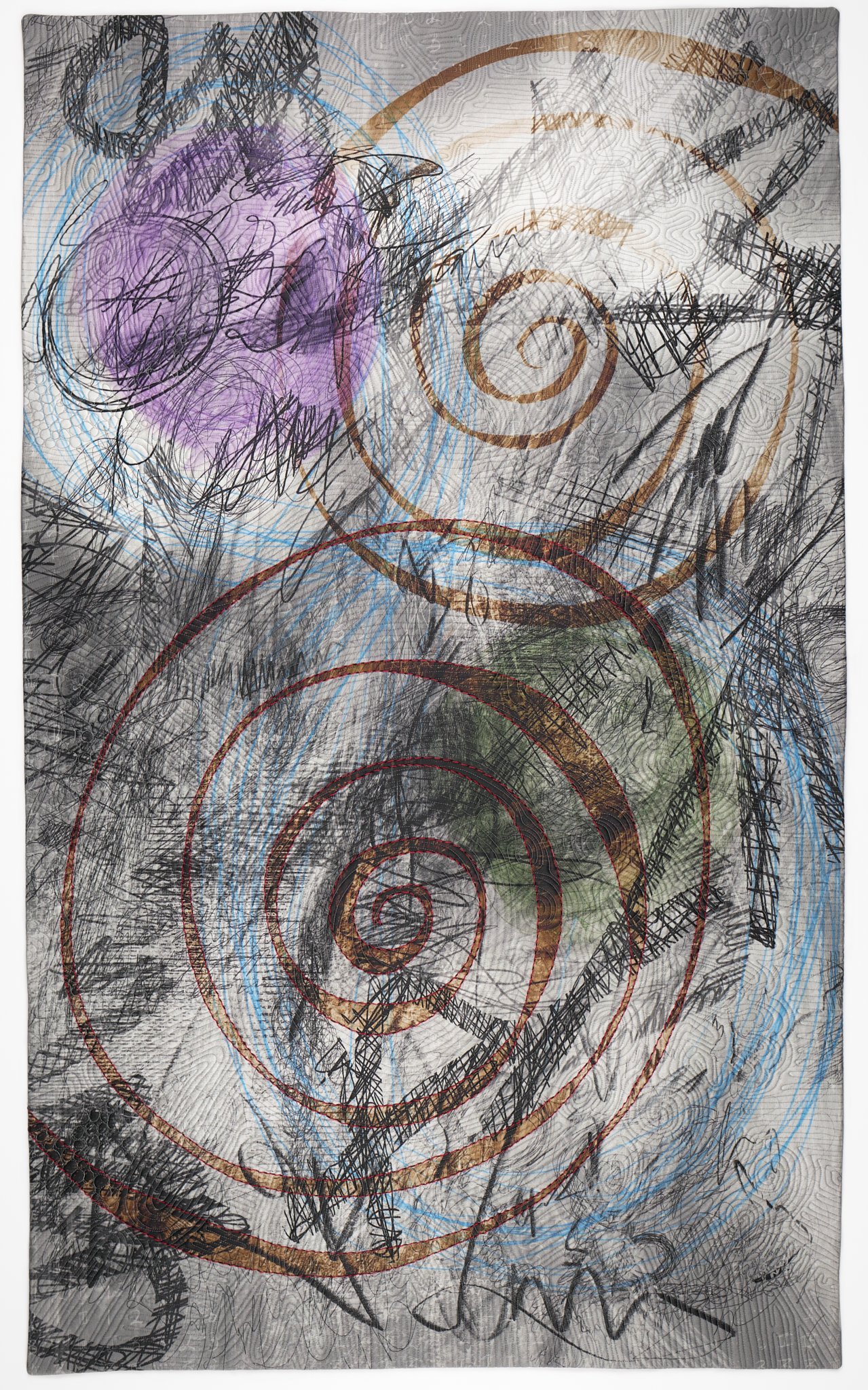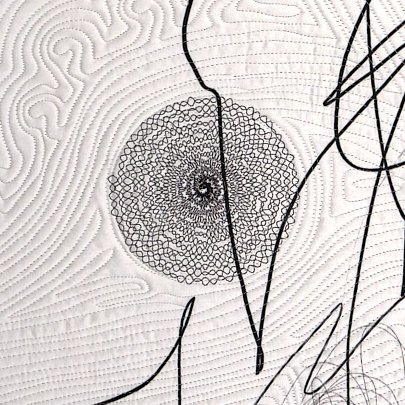Thoughts about the Mindful Scribbling series
Mindful Scribbling #1. 2022
I’ve written before in numerous places about the advantages of creating artwork in a series: developing ideas, refining technique, seeing how thoughts evolve over time to name a few. Artwork, and series work in particular, can also be a way of processing experiences and emotions in a way that writing, talk therapy, and other verbal exercises might not. The Mindful Scribbling series is an example of all of these things.
I think that artwork should stand on its own without copious explanation of what it’s about. It’s either compositionally strong and engaging or it’s not. Explanation can enhance understanding, but shouldn’t be the reason for deeming a piece to be outstanding. I think that the work in this series is strong in its own right, but it also merits a deeper discussion of the backstory, at least in this particular case. So, here goes.
The backstory
At the time of this writing I believe that it’s safe to say that the reader recalls, from their own lived experience, the spring of 2020. People in the US and many other countries were living in government mandated isolation in their homes, hoping to arrest the spread of COVID-19, all the while watching terrifying reports of overrun hospitals and morgues on TV. “Lockdown,” as it came to be known, seemed to help and hurt in equal measure. Children, older folks, and people living alone suffered from social isolation. It was even a bit much for introverts like myself. Patients in hospitals were separated from their family members in an attempt to protect both medical staff and patients from visitors who might be carrying the virus. This exact scenario was one of my worst fears—that I or my husband would be hospitalized, separated, and unable to help each other. That’s just what happened, but not in the way that I feared.
TRIGGER WARNING: The following paragraph deals with a car crash and the ensuing hospitalization. If those are things you’d rather not read about then skip the section within the red horizontal lines.
On June 2, 2020 my husband, Dan, was on his way to play a round of golf—a safe, masked, socially distanced, outdoor activity. Along the way his car was struck broadside by another car. Dan’s car was the third car entering an intersection after the light turned green. The driver of the other car ran the opposing red light at 95 MPH. Dan lived, but only barely, He was cut out of the car, intubated at the scene because he wasn’t breathing but somehow did have a pulse, and taken to a level-one trauma center. He had a closed head traumatic brain injury, broken bones (ribs, vertebrae, shoulder, sternum, and knee), collapsed lungs, cardiac trauma, and he was on a ventilator. I learned all of this over the phone because I wasn’t allowed to enter the hospital, much less visit him. His first ICU doctor arranged for me to visit, with the expectation that I was most likely coming to say goodbye. I don’t know why or how she managed this, but I came to understand that it was way outside the norm. It was a horrible experience but one for which I will always be grateful. Dan came home on 10 weeks later on Aug 12 after several trips to the OR, 3 weeks in ICU, time in a “skilled” nursing facility, and almost a month at National Rehabilitation Hospital (Medstar NRH). With the exception of the almost-deathbed visit and a surprise encounter in July when I happened to see him being loaded into a medical transport van on the way to NRH, we were completely separated. He remembers nothing of the entire month of June and July is a bit fuzzy, which says a lot about the nature of brain injuries. I remember everything. By mid-July he had recovered enough to manage phone calls and FaceTime. He spent a year in outpatient PT and OT, with speech/language therapy and vision therapy and another surgery thrown in. It was our whole lives. Obviously we wish it never happened, but we owe everything to the doctors, therapists, friends, family, and colleagues who helped put Dan’s body and our lives back together. “Back together” doesn’t mean “the same as it was.” He can walk, talk, see, think and care for himself—things I was told were possible, but not guaranteed. He went back to work and is as smart and capable as the sharpest person in most rooms. Neither of us takes these things for granted.
If you can believe it, that’s the short version of what I did during COVID isolation. There was no art-making. I’m a self-employed, full time artist, and my income isn’t the one keeping our household running. That meant that I could walk away from the studio and give everything to managing Dan’s care and the frightening and confusing bureaucratic mess we’d landed in. There were calls to insurance adjusters, our lawyer (to deal with the insurance), doctors, therapists, and the assistant state’s attorney and the investigating officer (to deal with the prosecution of the guy driving the car that hit Dan). There was communication to manage—family, friends, and colleagues across three continents. And, as I said, there was no art-making.
Returning to the studio
I did try to draw a little while Dan was away. I picked up my iPad and the most that I was able to manage was a series of angry scribbles in black and white. I’m grateful for the moment of clarity when I said to myself, “Don’t do this now. It’s not the time. You’ll find your way back, but not today and not for a while.” So, I focussed on the big problems and left the studio—literally and figuratively—to collect dust.
When I did get back to work, late in the winter after the accident, we were still dealing with a full therapy schedule (3-5 days per week). I did things like clean out the studio storage closet and organize shelves. That activity prompted the ongoing Reformation series, which you can read about on the Reformation Overview page. Eventually I looked at those scribbles and began to wonder what would happen if I spent a little time with them. I didn’t intend it as any sort of art therapy, but I saw something spontaneous and interesting in the marks that seemed to warrant further consideration. Over time those scribbled drawings evolved to become the Mindful Scribblings series, a group of six quilted paintings that I never intended to make, but which happened none the less.
Some general observations
Size and materials
All of the pieces in this series measure 31 inches wide by 52 inches tall. They are whole cloth paintings created on an iPad using Procreate. The finished compositions were printed on cotton sateen by Spoonflower (spoonflower.com). Each was layered with acrylic felt batting and a muslin backing, then free motion quilted. Numbers 1, 3, 4 and 5 include hand embroidered details that I added prior to quilting. Numbers 1 and 2 includes 12 machine embroidered motifs in total. I designed all of these elements using either drawing software or programs that I wrote myself. All of the resulting designs were then stitched out using an embroidery attachment on my sewing machine.
Change over time
There are six pieces in the Mindful Scribblings series. Similar to the pieces in the Outward Movement series, the pieces are numbered in chronological order and I can see change over time. The earliest pieces, #1 in particular, are largely monochromatic or have a very limited palette, while the later ones are more colorful and lively. They all have a doodle quality, which becomes more complicated as you move though the series.
The final piece, #6 is definitely part of the series. It has the same scribbling quality and, while the palette is broader than the early pieces, it is still limited. The spiral forms speak to the doodle quality of the other pieces and to the circular forms seen in all of the pieces, except possibly #4—though I would argue that the three colored shapes along the midline of #4 could be interpreted as imperfect circles. Two things that are particularly interesting about #6 are that it references motifs found in some of my other work (circular and spiral shapes, and large shapes that dominate the canvas, as compared to the smaller, tighter shapes in the other pieces in the series). I interpret this as an indication that I was beginning to reconnect with my pre-crash body of work, and that’s why I feel that #6 brought this series to a close.
The nature of doodles
Whether it’s doodling in the margins of a notebook during a meeting or intentionally playing with doodles in a sketchpad, these unplanned marks can be revealing. In some cases they might speak to one’s state of mind at the time they’re drawn. In others they might open the way to discovering new marks, glyphs, or motifs, which could be incorporated into future designs.
There are certainly things that I draw when my pen is aimlessly occupying itself on a page: counting-style hash marks (e.g., 4 vertical lines and an overlapping diagonal line to represent 5) grids, isometric cubes, meandering lines with filled shapes, and more. I don’t really know if any of these things mean anything, though I will confess that when I’m stressed I often find that I count (silently, to myself), so perhaps the hash marks are an extension of that. I’m less concerned about the meaning and more about graphic quality of these marks and the feeling that they carry an authenticity. They aren’t something that I invented for the purpose of including them in a design. (In a couple of paragraphs I’m going to say something that contradicts that statement, but stay with me for now.)
So, the doodles showed up to some extend in the original drawings. For this series I had those drawings printed on cloth by spoonflower.com then added elements to the design through hand and machine embroidery before quilting. The hand embroidery is generally intended to reinforce existing forms in the composition. However, in the case of #3, new circular shapes were introduced. Hand stitching is show, laborious, something a little painful (hand cramps and sore fingers), but also meditative.
Machine Embroidery
My doodling takes another form as well. I’m not sure what to call it except possibly code doodling. I’ve been doing some form of computer programming since the last 70s. You might say that its a left brain logical activity that balances out my right brain creativity, or perhaps its another expression of the right brain stuff. Either way, it’s something that I enjoy doing. Sometimes I get an idea and think, “Hmm, I could do that by hand, but wouldn’t it be interesting to do it with a computer and try loads of different variations.” Those code doodles have often made their way into my artwork as graphic elements in a design that’s printed on cloth (again, by spoonflower.com). In recent years I’ve figured out how to turn iPad drawings and mathematically-derived patterns/shapes into files that will drive the embroidery module on my sewing machine.
The collection of detail images below shows some of these machine-embroidered elements found in #1 and #2. While this isn’t meditative in th way that hand stitching is, there is still a mindfulness involved in the entire process.
Quilting lines
I’ve always said that I look at quilting as the last layer of drawing added to a quilted composition. In the case of this series the quilting lines, while still entirely improvisational, are very much intended to both reinforce and extend the design elements. As seen in the detail image below, the circular quilted elements in the open white background of #1 are a good illustration of this idea of compositional elements represented solely by quilting lines. Other quilting lines reinforce lines of flow or help provide definition for other quilted elements. For example, the straight lines in the upper right corner help give definition to the large quilted circle and create an, albeit subtle, figure-ground distinction.
Mindful Scribbling #1, detail
Things we’re afraid to say out loud
I haven’t addressed the embroidered block of odd patterns in #2. That deserves attention, if only to save the explanation here for posterity. But, I’ve intentionally saved it for near the end.
There are things that we say to each other—superficial greetings or observations about the weather. There are deeper things too. There’s also that old rule about not talking about sex, religion, and politics in “mixed company,” at the dinner table, and so on. Personally, I think those are some of the most interesting conversations. But—there are some things that we might want to say but feel hesitant to say them at more than a whisper. Those might be things like, “Mom, I’m gay,” or “I love you”, or “I’m disappointed in you right now,” or “I’m scared.”
For years I’ve been fascinated by the way that encryption and obfuscation can be used to speak a secret and keep it hidden at the same time. That’s what those pattern in #2 are: graphically encrypted text. I wrote a Python program to run text through a complex substitution cipher, converting the letters into numbers and representing those numbers with as symbols. The results get written to a file that’s compatible with the embroidery module on my sewing machine. I won’t bother you with the logic of the encryption, but I will come clean on what the blocks of text say.
On June 2, 2020, against all odds, he became The Boy Who Lived.
Forever altered, we both survived.
Is life just a never-ending cycle of trying to stand, getting knocked down, and getting back up again?"
So, now what?
Do we just wait?
How do I stop holding my breath?
Final thoughts
This spring (June 2024) will mark 4 years since Dan’s car accident. The Mindful Scribbling series—the one that I never intended to make—has come to a natural conclusion. There are no new series that directly address the experiences of 2020-2021. I’ve written about all of that and, while Dan, our friends, our family, and I will never forget those events, I don’t think that the story needs more telling or that more art needs to flow from those experiences. Having said that, it’s worth noting that everything we are and do stands on the foundation of all of our prior living and learning. It will always be there in some way; to deny it would be foolish, but to be trapped in those memories would be wasteful.
Timeline and history
| Title | Date | History |
|---|---|---|
| Mindful Scribbling #1 | 2022 |
Juried into "Quilt National 2023" Published in "Quilt National 2023" exhibition catalog Exhibition: "Quilt National 2023," Dairy Barn Art Center, Athens, OH, May 26 - Sept 11, 2023 Exhibition: "Quilt National 2023," Holter Museum of Art, Helena, MT, Oct 26, 2023 - Jan 1, 2024 |
| Mindful Scribbling #2 | 2022 |
Juried into "Quilts=Art=Quilts 2022" Exhibition: "Quilts=Art-Quilts 2022," Schweinfurth Art Center, Auburn, NY, Oct 29, 2022 - Jan 8, 2023 |
| Mindful Scribbling #3 | 2023 | |
| Mindful Scribbling #4 | 2022 |
Exhibition: "Between the Lines, (Gayle Friedman & Russ Little)," Portico Gallery, Brentwood, MD Nov 19, 2022 - Jan 14, 2023 |
| Mindful Scribbling #5 | 2023 | |
| Mindful Scribbling #6 | 2023 |


















